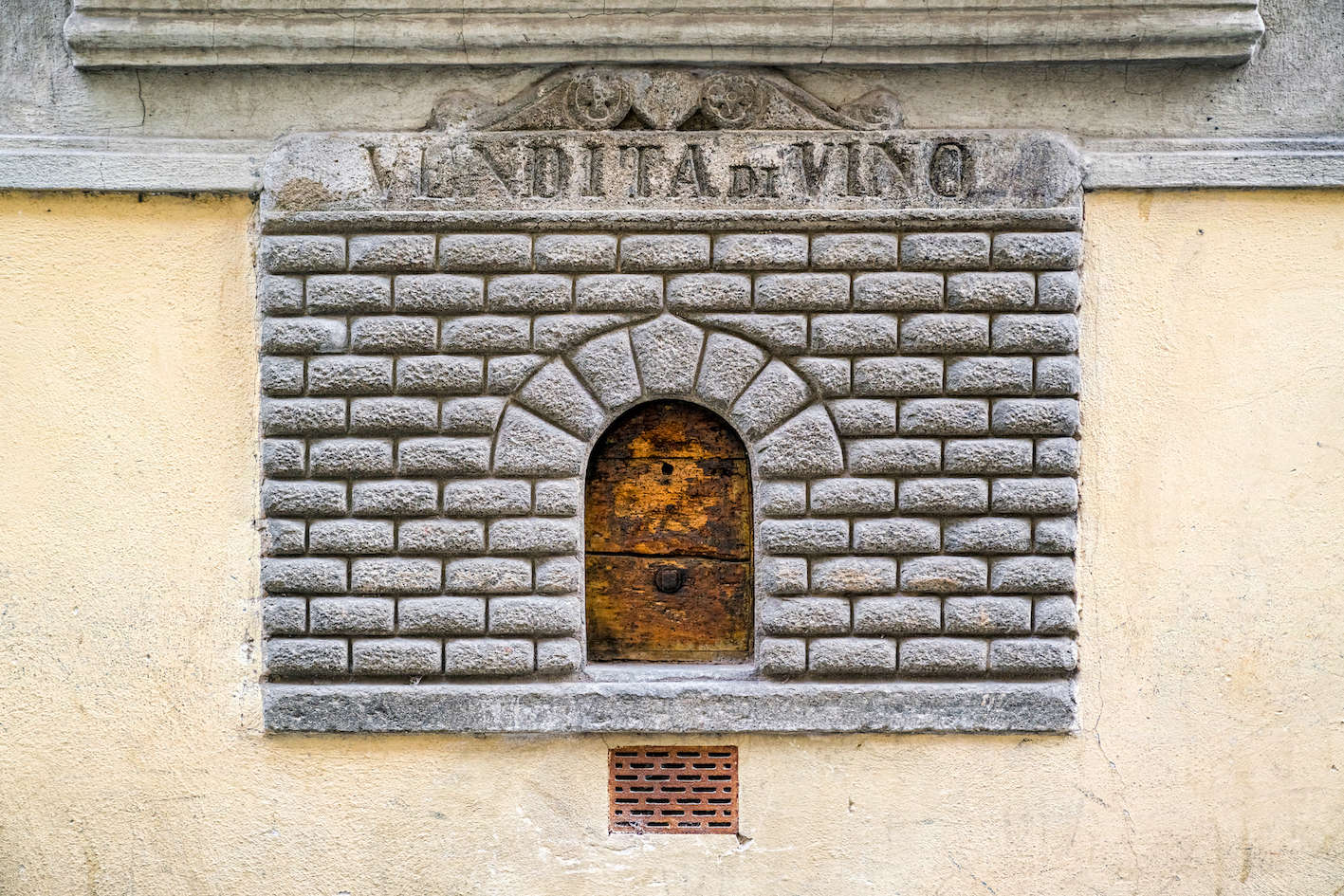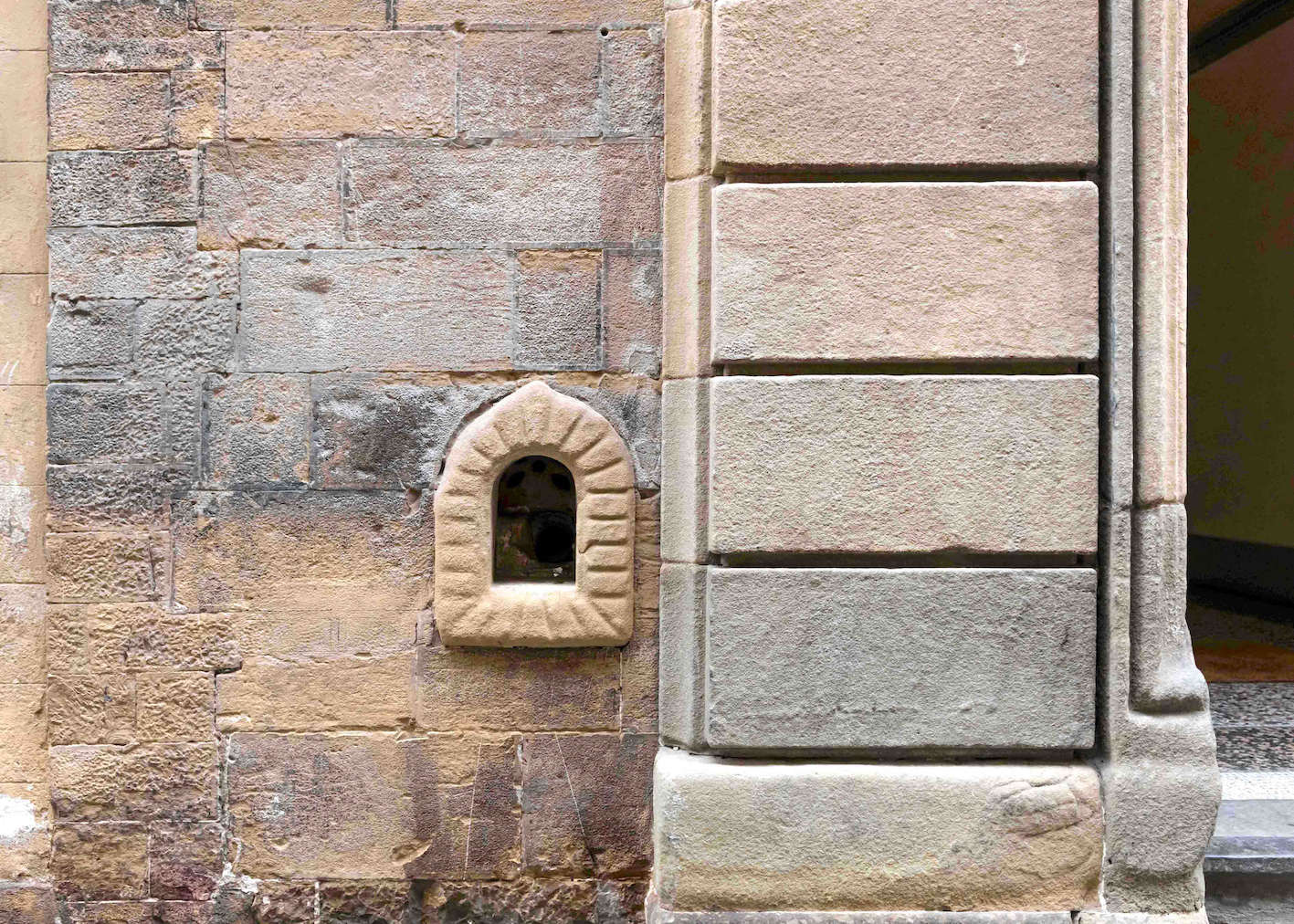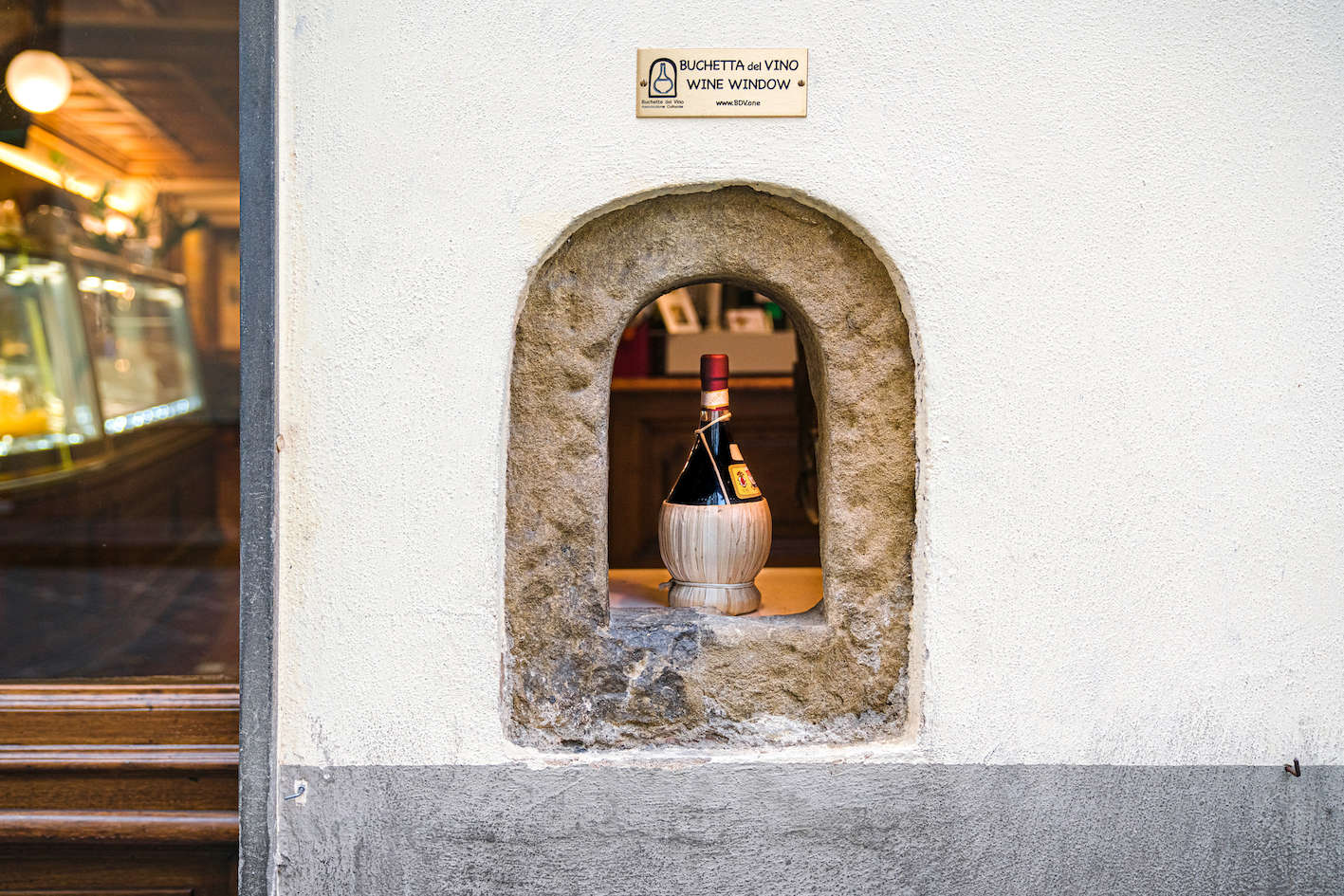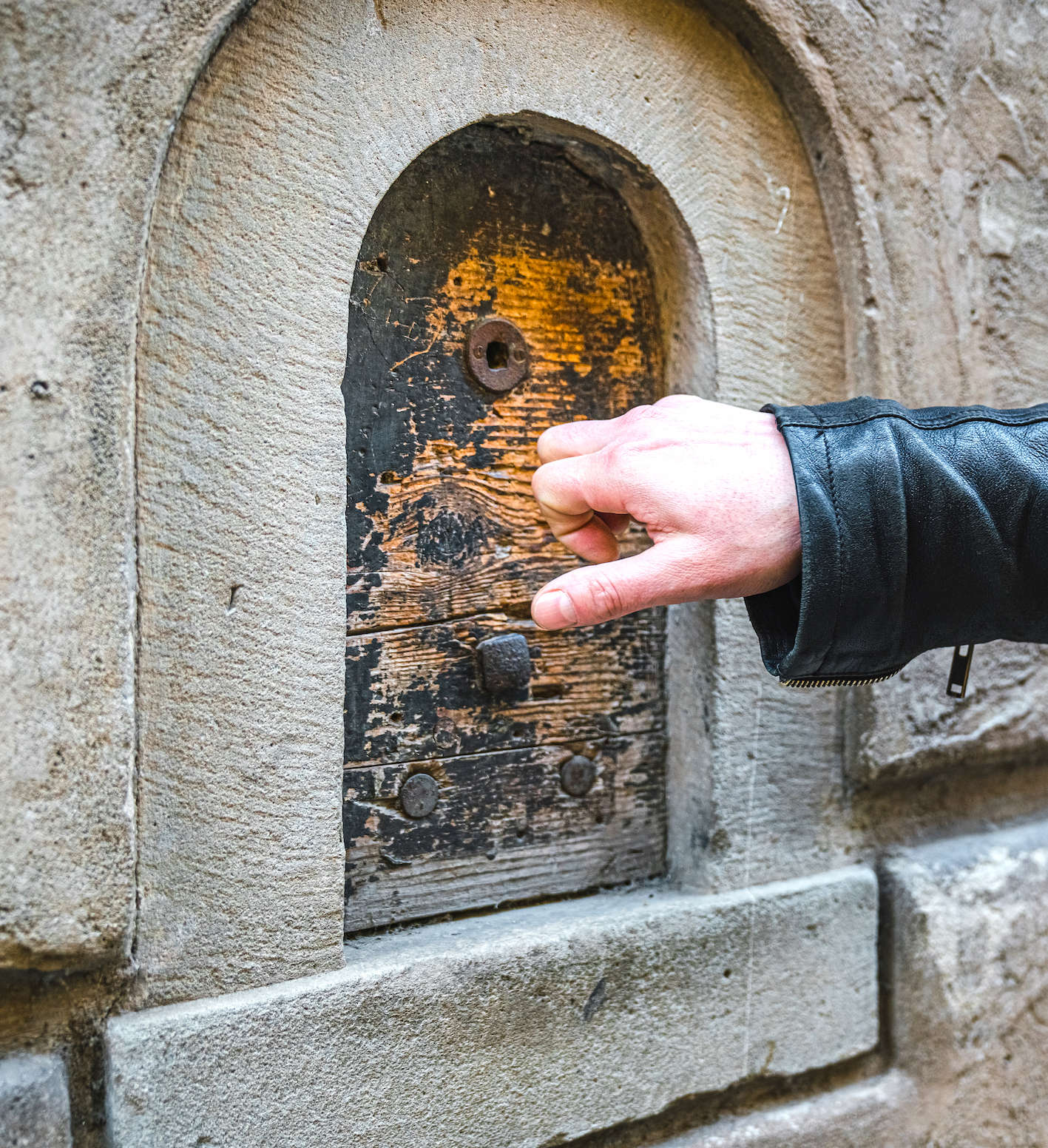What are Florence's wine pits, a heritage to be rediscovered
Walking through the historic center of Florence, it is easy to come across buildings that on the facade, at basin height, present small doors framed by stone as if it were the front door, complete with latch, in miniature. We are not in the presence of the Lilliputians’ front door and it is not a modern gimmick: that in fact is not a door, but the passage through which wine was exchanged with the least possible contact from the time of the Grand Duke of Tuscany Francesco I (1541 - 1587), son of Cosimo I de’ Medici and Eleonora di Toledo. The noble owners of the palaces in the city were in fact landowners in the Florentine countryside who by kind permission of the Grand Duke could retail the drink from their vines as long as it was in modest quantities. Quantity identified in a flask of the time (which would contain a liter today), which passed just right through the opening of about 30 cm by 20 or so of the small doors, although they are of varying sizes (“Small doors 3 feet from the ground in the wall of the houses where one has wine to sell have 4 inches wide and 11 inches high, are plugged by a small tin door and a knocker for calling, one can pass only one bottle through them.” thus spoke of them in his notebook in the year 1764 by Abbot Pierre Augustin Boissier de Sauvages, who was born in Alès in 1710 and died in 1795, a great naturalist who studied silkworm breeding who came to Florence and was accepted into the Accademia dei Georgofili). They were not taverns or wine shops, mind you: they were the palaces of producers who sold directly to consumers bypassing the intermediation of innkeepers and stores thus being able to offer the wine at a competitive price. A couple of florins, usually. The room into which it faced was usually connected to the cellar of the lord of the palace. A custom that went on until the end of the nineteenth century, after which they fell into disuse to the point of total oblivion even for the Florentines themselves: no one remembered what they were used for until an association, Cultural Association “Buchette del vino,” came into being and wanted to census them and study their history, thus giving impetus to their valorization. Accomplice also was the lockdown from Covid, when some Florentine merchants rediscovered this way of delivering goods as when there was a plague in Florence (in the year 1634, as soon as the plague in Florence was over, the Florentine academic Francesco Rondinelli wrote a “Relazione del contagio” where he described the anti-county effectiveness of the wine “sportelli”: a document of great importance for the history of buchette, found and narrated by Diletta Corsini). The echo was such that abroad they started talking about it, and today in front of the buchette where there are premises (about ten) there is a line of tourists waiting to receive his glass of wine from the small window. So famous that some merchants would like to pierce the wall to make it where it is not and even abroad have copied the idea. To get a glimpse of this slice of Florentine life, we interviewed the president of the wine buchette association Matteo Faglia, who has done the meritorious task of filing and geo-referencing them on the website with a photo and explanation for one of the more than 180 surveyed. AL. How did the idea of making an association around what we called the Wine Buchettes come about? MF. Nine years ago, together with Diletta Corsini (a Florentine art historian) and Mary Forrest (an American who moved to Florence for love), we decided to found a nonprofit association to awaken the memory of Florentines about a unique tradition that is so special but unfortunately forgotten. How many of you are there and what activities do you do? Over the years we have grown to the current level of a hundred members, about thirty of whom are active. We study the history of wine pits by searching for documents and testimonies from the past, we organize meetings to present the book we published and continue to update, we run a website also in English that has reached 150.000 annual visits, we are on social media, we offer tours in the city and in the hills, last year we set up an exhibition in the prestigious Palagio di Parte Guelfa, visited in 15 days by 5,000 people, we were also guests of Vinitaly with a buchetta booth as “ambassadors” of Tuscan wine and culture. What are they and what was the purpose of these openings in the walls? With a characteristic arched shape, they were originally used to sell, from the palace property, the wine produced by noble families from grapes grown in the countryside. Through the buchetta, flasks brought directly from the customer were received and filled, the wine was of excellent quality and had an attractive cost because the Grand Duke in the second half of the 1500s had granted exemption from taxes and gabelle. How many finestrelle are there in Florence? Is this a unique feature of this city? The census that the association continues to keep open has come to record to date 184 visible pits on the territory of the Municipality of Florence (of which 158 are concentrated in the Historic Center) plus another 110 “disappeared,” of which we have records but which are no longer there. In addition, in 40 other municipalities in Tuscany we have found 114 more so far: because their use extended over the centuries from the Florentine area to the entire Grand Duchy, corresponding more or less to present-day Tuscany.

What sizes are they?
The dimensions of the pits are those that allowed the flask to pass vertically (until the 1800s they were corkless!). The size of the flask has been increasing over the centuries, at first the capacity was a little more than a liter, and the oldest windows measure about 20 cm base by 30 cm height.
Prior to your interest were there any documents or studies on this?
Very few, a couple of books that listed less than 100 references, no official list even in the Superintendency.
Some of them have a brass nameplate: how did they come to be branded? What does the Superintendency say?
The plaques are placed, with the consent of the owners, on the pits that have been recognized in their authenticity by our Association, which has obtained clearance from the Superintendence for this activity. They serve to give them a name and identity, answering the curiosity of those who pass by wondering about them.
What are the buildings with windows? Is there a list? Were they all noble?
Of all the finestrelle there is documentation on our website www.buchettedelvino.org where you can see an up-to-date list and full photo gallery. We also maintain an interactive map on Google (with more than 2 million views) where the locations of all the wine pits are listed.

Now what’s in the wine pits that overlook the little window?
Most of the buchettas now appear either plugged or with a small wooden door that no longer opens to the interior. Correspondingly, what were once the vintner’s rooms are now mostly rooms or living rooms of common apartments.
How many restaurants or clubs are there with small windows?
After the recent pandemic, some establishments with an original wine window decided to restore it and use it for serving wine glasses, with great success with both Italian and foreign audiences. Those operating in this activity are about ten to date.
Were there those who appropriated the idea so much that they liked it to make it from scratch in modern times?
Given the success, many locals who do not have a historic hole-in-the-wall are trying to apply to the municipality for permission to create a new one, but without getting the green light. Still, some have taken steps to carve out one, obviously not authentic, in the shop window of the venue.
Are they also known abroad?
The lines that form daily in front of the reopened pits are composed of mostly foreign tourists. The interest abroad in this very Florentine peculiarity is growing, we see it from the accesses to the site (about half come from outside Italy) and the sales of our English-language book both in bookstores in the city and on Amazon.
Are there windows that have been lost because they have been closed or bricked up?
Rather than closed or bricked up, some small holes were actually removed during renovation work on the property. Almost always to make way for gas or water meters.
Are there any that are more special or have an anecdote to tell?
Over the years we have managed to save several of them from removal or damage: such as when air conditioner vents were placed at one of these little windows, or when the hole was moved 5 meters further away because the owners preferred to have it in the living room rather than the bedroom. If they could talk, many wine pits would undoubtedly have many curious anecdotes to tell, including daring robberies pulled off by nimble and “subtle” petty thieves, such as the one that took place in Via dello Sprone in the last century and such as those recounted in the manual “The Criminalist Judge” of 1638.

From an architectural point of view, how were they made, are there any of them of particular merit to point out?
The hundreds of existing buchettas are all similar but all different. It is the stone frame that differentiates them, often commissioned to stonemasons with a design that echoed the architectural motifs of the facade: as in the cases on Via Santo Spirito and, even more conspicuously, on Via del Giglio. (Photos attached)
What do you think of the tourist tours promoted on the Internet that propose a tour of the clubs in downtown Florence starting from the little windows with the goal of getting drunk?
Wine pits belong to Florentine/Tuscan history, culture and tradition. They pertain to a mode of wine trade that has lasted for centuries and has always involved a product considered a part of the daily diet and not a tool for getting high. Only unscrupulous tour operators and braggarts of local history can exploit the buchette heritage for their own purposes of easy profit. It is sorry to see something that belongs to wine culture end up being debased by the ignorance and opportunism of some.
Warning: the translation into English of the original Italian article was created using automatic tools. We undertake to review all articles, but we do not guarantee the total absence of inaccuracies in the translation due to the program. You can find the original by clicking on the ITA button. If you find any mistake,please contact us.




























